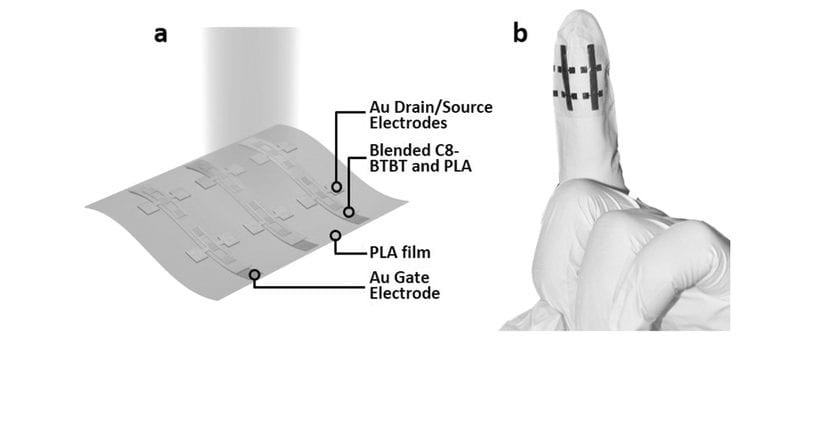Organic phototransistors (OPT) consist of organic semiconductors that convert light into electricity. For their application in wearables and their integration into biosystems, organic phototransistors need to be flexible and durable, whilst keeping good transistor characteristics. In order to print OPTs the semi-conducting materials needs to adhere to a certain window with respect to the solubility, viscosity and final film-forming properties.
Prof. J. Huang and co-workers have studied the effect of the device structures on the photoresponse of OPTs by smartly using the interfacial charge effect. It was discovered that compared to layered OPTs, the blended ones exhibit higher photocurrent to dark current ratio (up to 105) and better light detection limit (lower than 0.02 mW cm−2). The better performance of the blended-OPTs was explained by their increased interfacial area and more intensive charge trapping effect, which as a result exhibits better performance.
As a proof-of-concept, the researchers prepared flexible OPTs by inkjet printing a blended solution of a common soluble organic semi-conductor and an insulating biopolymer. In addition to their photoresponse properties, these phototransistors showed a stable performance even when a bending radius down to 300 µm was applied.
This work contributes to the understanding of the interfacial charge effect of OPTs. The presented method to prepare in a simple manner flexible, low-cost and printable OPTs is an important step for the development of organic electronics applications, such as imaging, optical communications, or biomedical sensing.
The researchers presented their work in a recent publication Advanced Functional Materials.

















